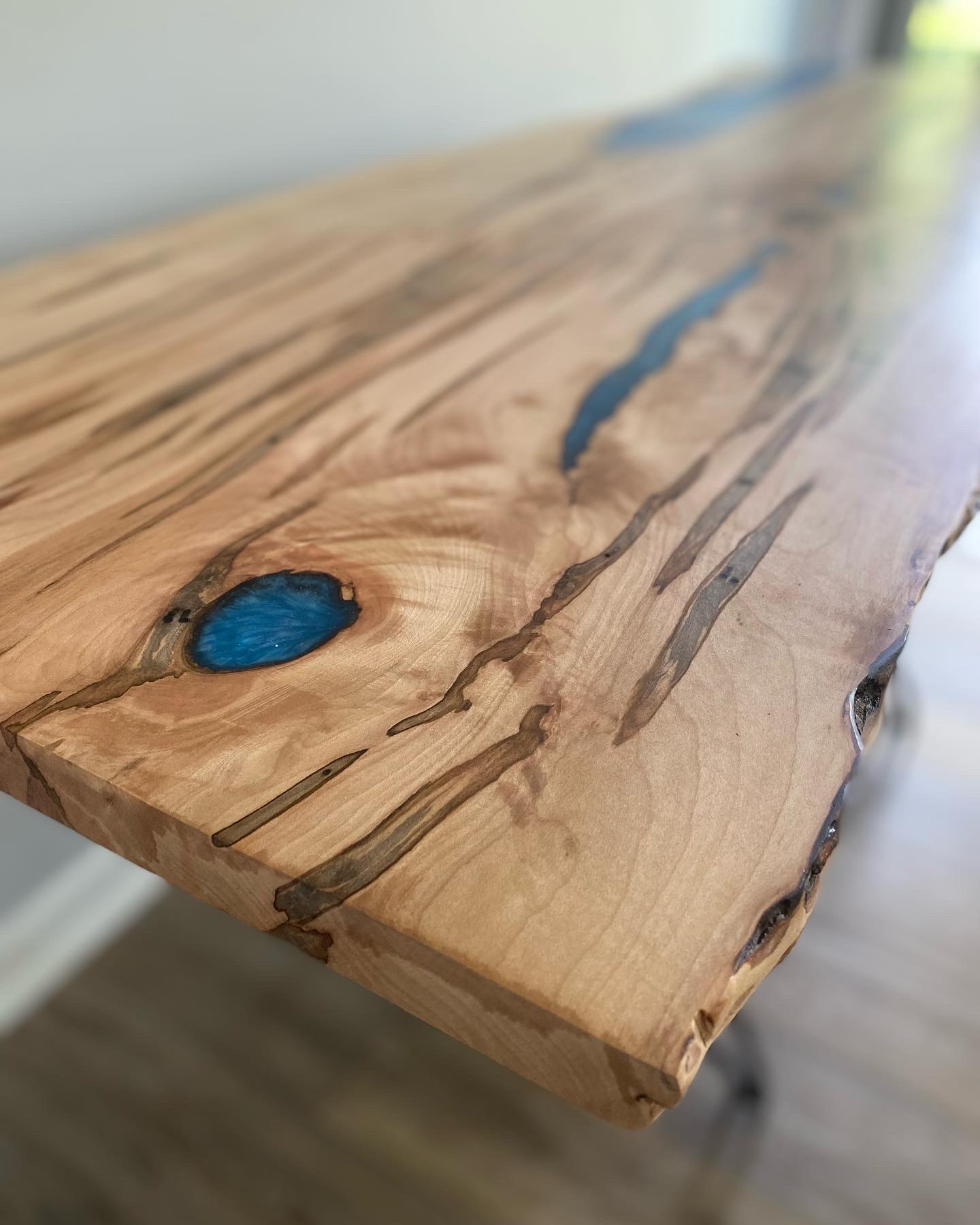FAQs
We get a lot of questions about epoxy, and it’s uses. Below you’ll find some of the more popular questions we get.

What materials can I use for my mold?
Any 3/4″ plywood can be used as long as some form of mold release is used over it. If using melamine, you can use a wax or spray release. If using MDF, particle board, or other plywood, sheathing tape should be used as the mold release.
Can I reuse my mold?
Yes, if you use the proper mold release, you can reuse your mold.
How long do I have to wait to remove from mold?
Every epoxy is different; however, 36 hours should be good for most of them. If you can no longer press your fingernail into it, then its cured enough to de-mold.
How thick can I pour?
Casting resin is used for pours thicker than 1/8″, and most casting resins will allow up to a 2″ pour.
Is epoxy food safe?
Please check the MSDS to see if it is food safe. Some of the newer epoxy brands are permitted to be used in areas where you may have “incidental food contact,” for example, tabletops and countertops. Still, you should never eat from or prepare food on an epoxy surface.
Do I need to remove the bark?
Generally speaking, yes; however, if you fully encapsulate your table with the bark on, it can no longer fall off and, therefore, can be left on.
Are river tables profitable?
Yes, they can be profitable. It’s up to you to create a market for your business. I have, and so can you.
How do I price my projects?
Pricing projects can be difficult and also different for everyone. With that being said, I have created a video specifically for that purpose.
Does ambient temp matter?
Ambient temp is very important. The best temperature to pour is around 72 degrees F. The warmer the temp, the faster the epoxy cures, which can cause cracks, bubbles, and separation from the wood. If it’s too cold, the epoxy takes a very long time to cure.
